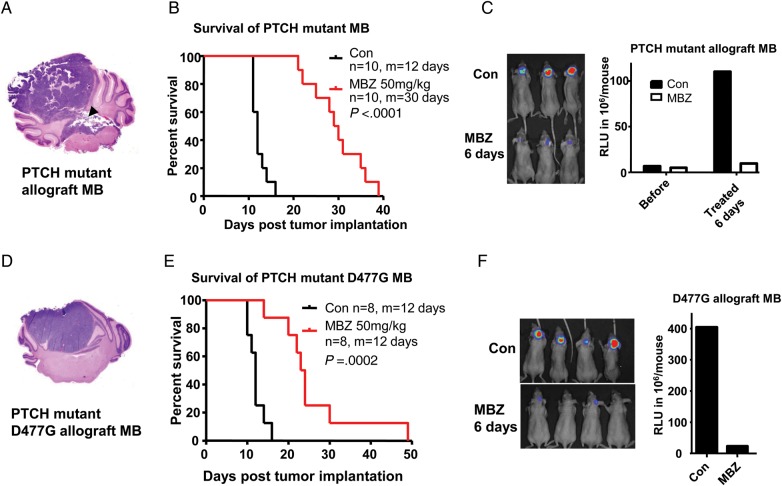Fig. 2.
MBZ inhibited the orthotopic PTCH+/−, p53−/− allograft and the vismodegib-resistant SMO-D477G medulloblastoma in mice. (A) The PTCH+/−, p53−/− allograft tumor was implanted in the right vermis of the cerebellum of nude mice. An H&E slide shows a fully grown medulloblastoma (MB) that broke into the fourth ventricle (black arrowhead). (B) Treatment with 50 mg/kg MBZ via oral gavage starting from day 5 after tumor implantation improved the median (m) survival by 150% vs the control group. (C) Xenogen scan demonstrated that the tumor growth was significantly inhibited by MBZ treatment. The tumor load in a set of representative mice after 6 days of MBZ treatment is displayed in the left picture. The right graph shows the average xenogen counts before and after the MBZ treatment. (D) D477G mutant allograft derived from a PTCH+/−, p53−/− medulloblastoma-bearing mouse treated with the Hh inhibitor vismodegib was implanted in the cerebellum of nude mice. The H&E slide shows the tumor growth in the right vermis of the cerebellum. (E) Daily treatment of mice with MBZ extended the median (m) survival from 12 days to 30 days. (F) Xenogen scan shows the inhibition of tumor growth following 6 days of MBZ treatment. The right graph shows the average xenogen counts without (Con) and with MBZ treatment.

